For the painter of Belgian origin, aviation was as significant as art during her early years at the Academy of Fine Arts. Her love for flying inspired her to paint landscapes from a bird’s-eye view at the start of her studies. In recent years, however, she has focused on scenes from tennis courts, where her friends pose as athletes with rackets and balls. You might even spot the artist herself on the clay or while running, as the successful 2022 AVU graduate and recipient of the Critics' Award for Young Painting clears her mind. Hockey is another theme in Laura’s work, as seen in her painting exhibited at the "Get On the Ice!" exhibition at Kinský Palace, where her bold Hot Boys can be viewed until October 27.
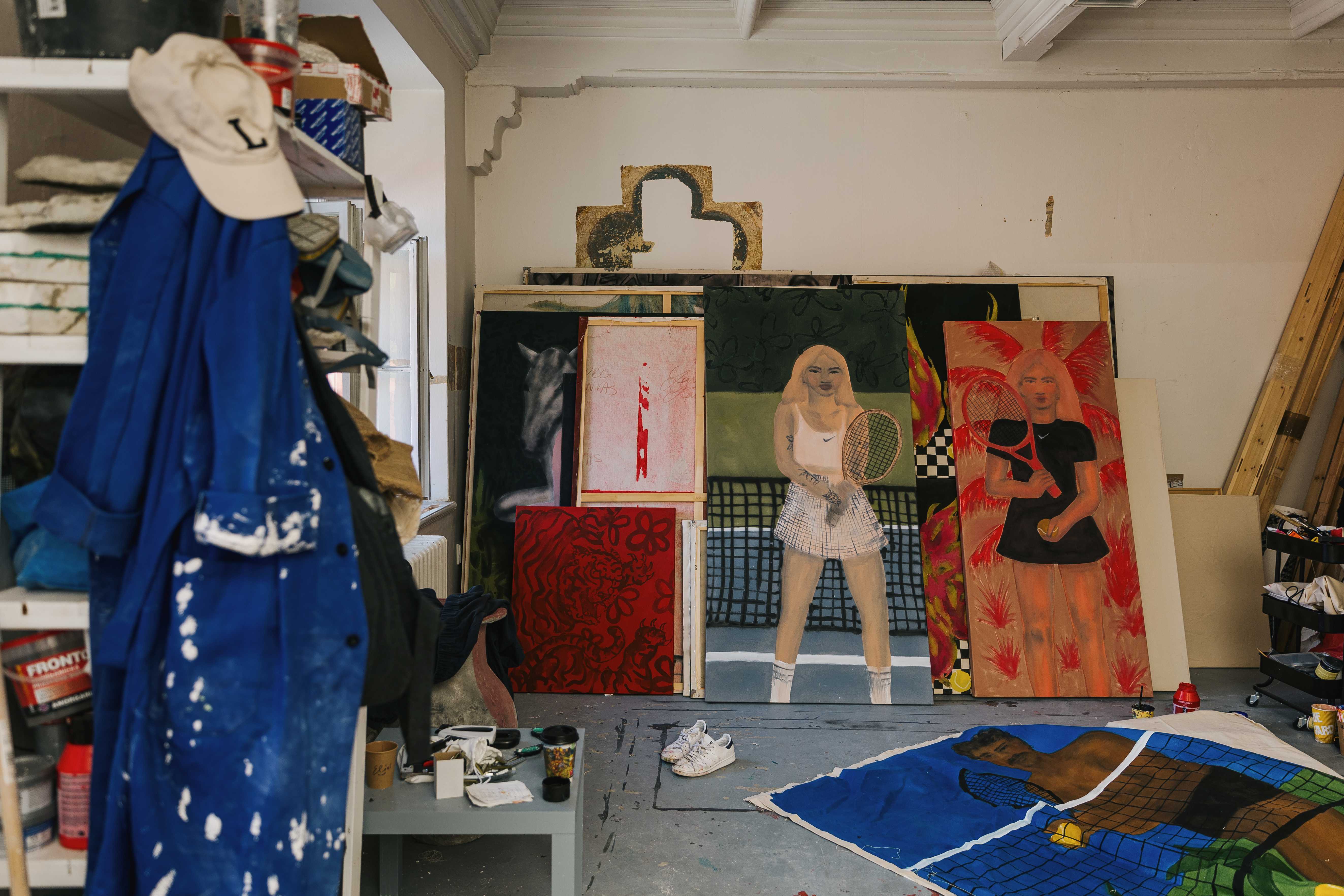
The first question concerns the painting that is part of the "Get On the Ice!" exhibition, organized in collaboration with the Sport in Art platform at the National Gallery Prague. How was the provocative painting of four naked male bodies selected?
I created two paintings, but in the end, only one was chosen during the installation – the larger one, measuring 200 by 300 cm, featuring four hockey players in a locker room. The second painting, measuring 180 by 180 cm, depicted just one hockey player. Both paintings are monochromatic, in red. They drew too much attention, so the curators decided to hang only the larger one.
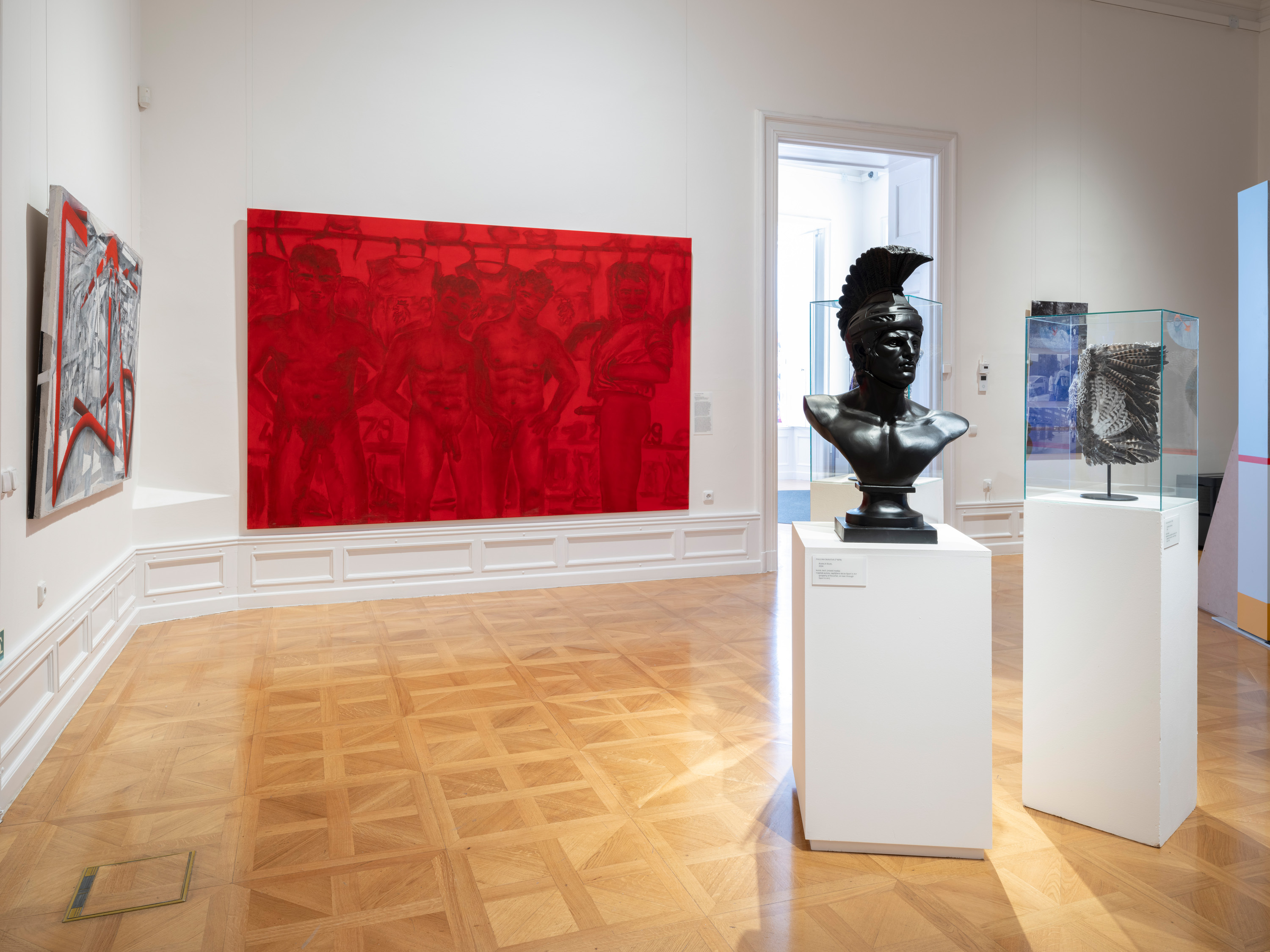
And how did you approach the unconventional theme connected to hockey?
Hockey players in the locker room after a game are naked, vulnerable, and sensitive—something the audience doesn't typically associate with these athletes during a match. All the shame and exaggerated masculinity that often accompany the sport were completely set aside. For some, the painting may be slightly controversial. The fact that the figures are naked and touching each other might challenge the usual stereotype of a hockey player.
How do you perceive the less traditional theme of the exhibition?
With this project, the National Gallery Prague has reached an audience that might not usually visit exhibitions. It’s wonderful how collections from the depot, spanning from Dutch masters to us younger artists, were connected. We had complete creative freedom, which led to a remarkable thematic exhibition. My favorite piece in the entire show is Jan Vytiska’s "Rohatá zima" in the style of Ladov, as well as his portrait of a skull with a helmet—both paintings are phenomenal.
What is your personal relationship with sports?
It hasn’t always been positive. Since childhood, I was very clumsy when it came to sports, but luckily, my mom "forced" me to play tennis so she’d have a partner for the future. I still play tennis to this day, with more and more enthusiasm. On top of that, I try to go running several times a week. For me, it’s the best way to mentally unwind. I play tennis once a week, and I go running four to six times a week. During the winter season, it’s snowboarding. Besides that, I love everything about racing—Formula 1 and go-karts are a huge passion of mine.
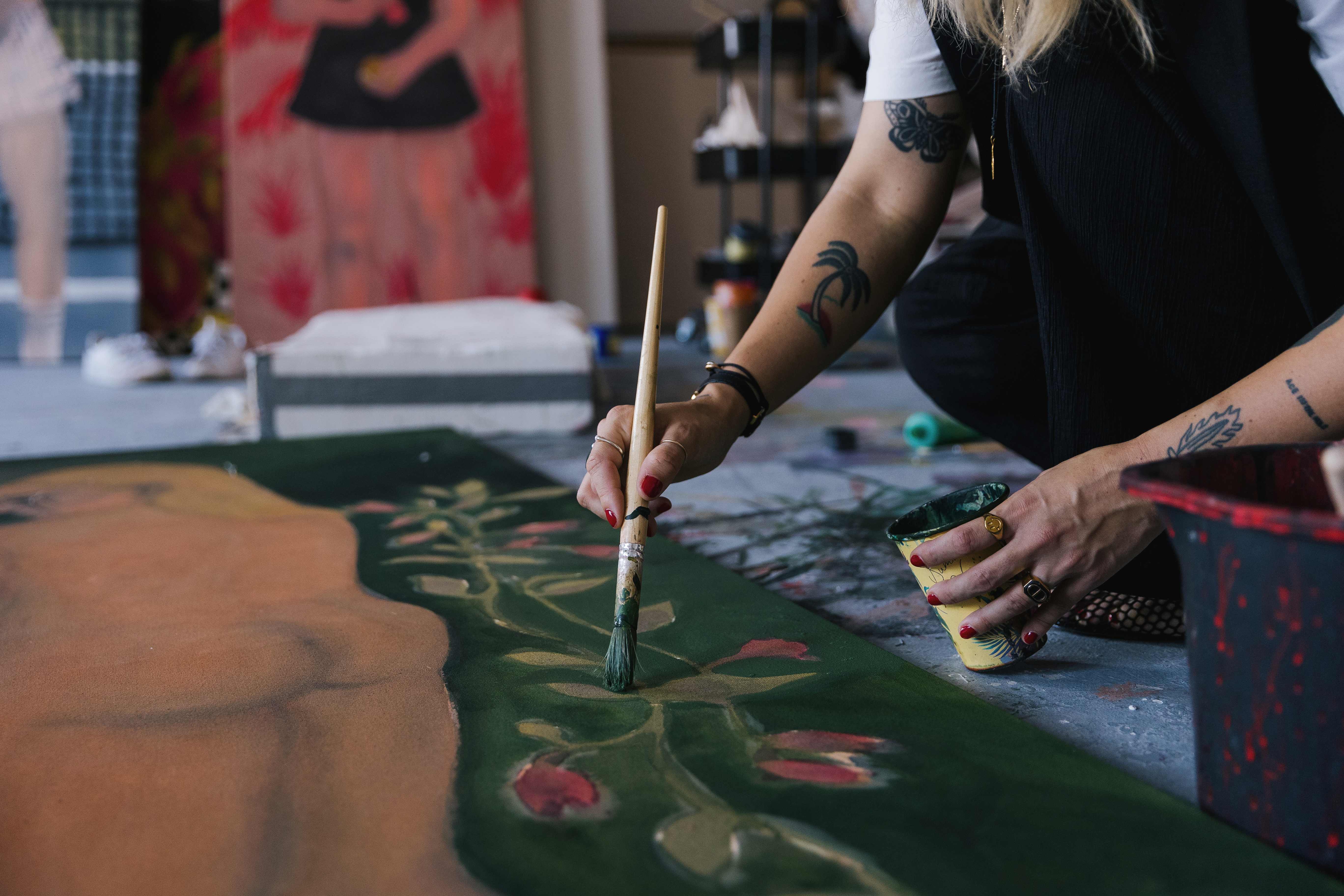
What about sport aviation?
I see flying as very natural. Some people learned to ride a bike as kids—something I was never good at (laughs)—and I learned to fly. My grandfather was a pilot and flew at the same airport where I learned. He flew gliders and helicopters, while I flew gliders and motorized planes.
Does sport also provide you with a kind of inspiration for your work?
Definitely. It’s one of the reasons I run regularly. While running, I come up with various ideas for new paintings or objects. Because of flying, I painted landscapes from a bird’s-eye view during my early years at AVU, using photos from gliders. During each glider flight, I took pictures with a Cessna of important places I knew from the ground. In my paintings, I tried to capture the experience of the flight and the moment in relation to the place from that bird’s-eye view.
Does playing tennis not work the same way?
On the court, I mostly talk about art. I usually play with people from the art world as well. But to come up with creative ideas, I need to be alone and have a clear mind. That only happens when I’m running. When flying, I focus purely on the flight and the instruments, switching into a concentrated mode that I only have while flying. In other everyday situations, my attention is quite scattered (laughs).
What drew you to flying, and what does it mean to you today?
My parents built a house at the edge of one of the runways in Mladá Boleslav. From the garden, I watched planes every weekend, and at one point, I decided I wanted to fly too. My grandfather fully supported me, and later, provided financial support as well. Flying represents incredible freedom and discipline to me at the same time.
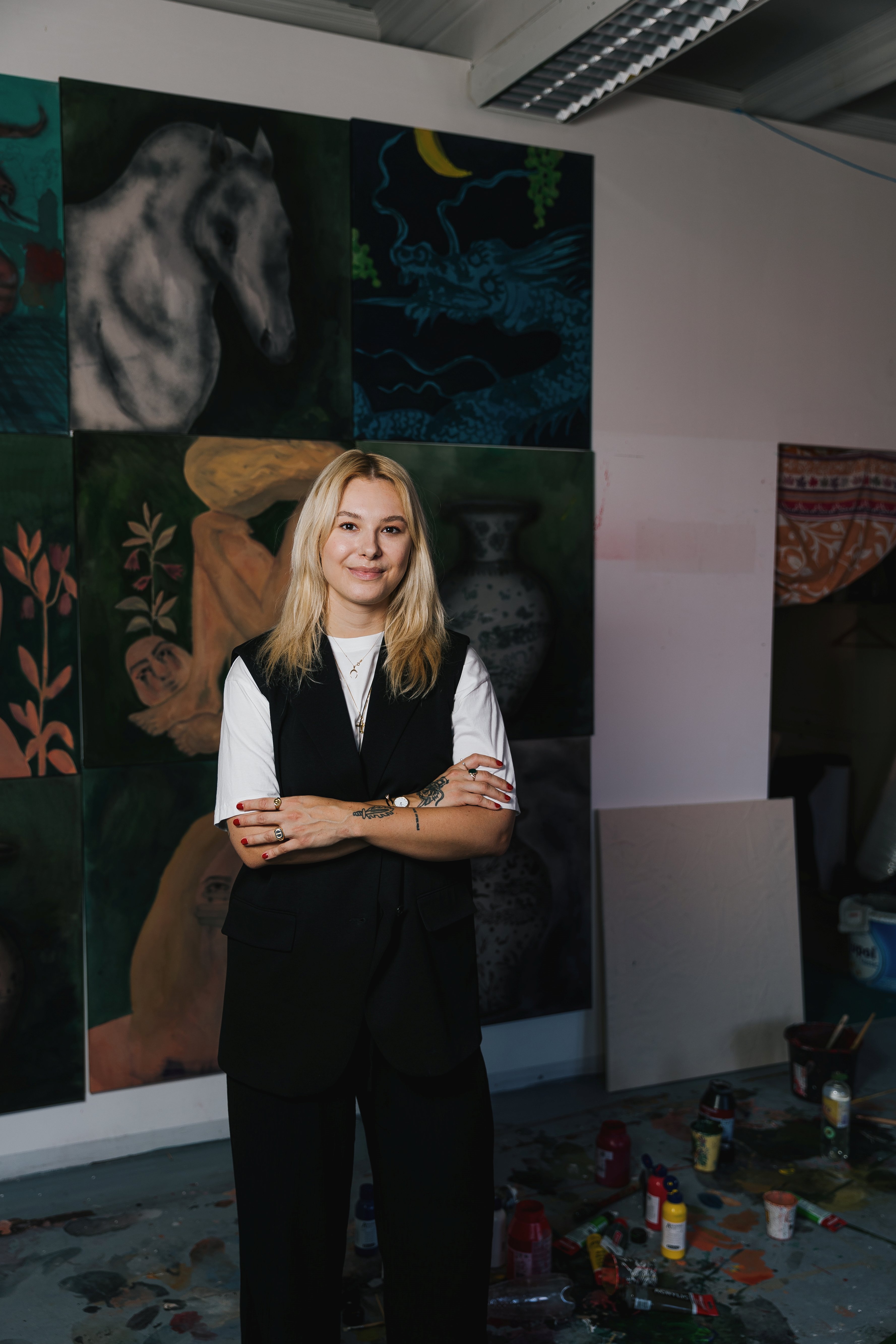
How much time do you spend "in the clouds" these days?
Sadly, very little this year. I’m saving for tuition in England, where I’m moving in September. So, unfortunately, I haven’t been able to fly as much as I would have liked. Otherwise, I’ve always tried to fly at least once or twice a month.
As you are partly of Belgian descent, did that influence your choice of hobbies when you were growing up and exploring what you wanted to do in life?
I’m half Belgian and half Czech. It wasn’t so much that I chose hobbies based on my heritage, but thanks to my father, I developed a passion for racing and Formula 1, and thanks to my mother, I have a love for tennis and an appreciation for aesthetics.
Did you ever dream of flying as your profession?
Yes, I did. During high school, when I first started flying, I wanted to join the military. But with my knowledge of math and physics, it was out of the question—and large commercial flying never appealed to me (smiles).
Have you ever been in a critical situation during your sports activities that you prefer not to remember?
In sports, the only situation that comes to mind is jumping into water from a great height, where I dislocated my shoulder, and the subsequent problems dragged on for years. Since then, I haven’t jumped into water or played water polo (laughs). But I did experience a crisis while flying. I was on a sightseeing flight with passengers, with my fresh pilot’s license, and the weather was really bad. The cloud cover was very low. The couple I was flying with insisted on continuing despite my suggestion to reschedule. Immediately after takeoff, I flew into the clouds…
What happened?
I knew I absolutely couldn’t descend, so I climbed to circuit height and flew straight. After several endless minutes, I emerged from the clouds and immediately turned 180 degrees back for landing, flying a route over the city where flights normally don’t go. After landing, my whole body was shaking. For someone with only 50 hours of flight experience, it could have been fatal. Since then, I have a great respect for flying, and if I have long breaks, I always take a safety pilot with me.
Have you ever had a similar crisis during your creative work?
The only comparable feeling is perhaps total physical exhaustion. When there’s a deadline for an exhibition and I’m in the studio nonstop, it’s comparable to a weekend at the airport. Otherwise, I fly because it’s an extremely focused activity, and I can’t have anything else on my mind. It’s organized, similar to when I drive a car. In normal life, I don’t have that. Two different worlds—chaos and concentration.
Where else in your work can we find parallels between art and sports?
In recent years, my paintings have focused on tennis themes. I paint self-portraits and portraits of close ones on the courts with tennis attributes. When I started with this theme, tennis balls began appearing in my paintings. Gradually, I tried to get to more personal themes, and the balls served as one of the attributes. Similar to the Armenian cross in the work of artist Annemari Vardanyan or the Negroni glass in the work of gallery owner and friend Jan Reindl.
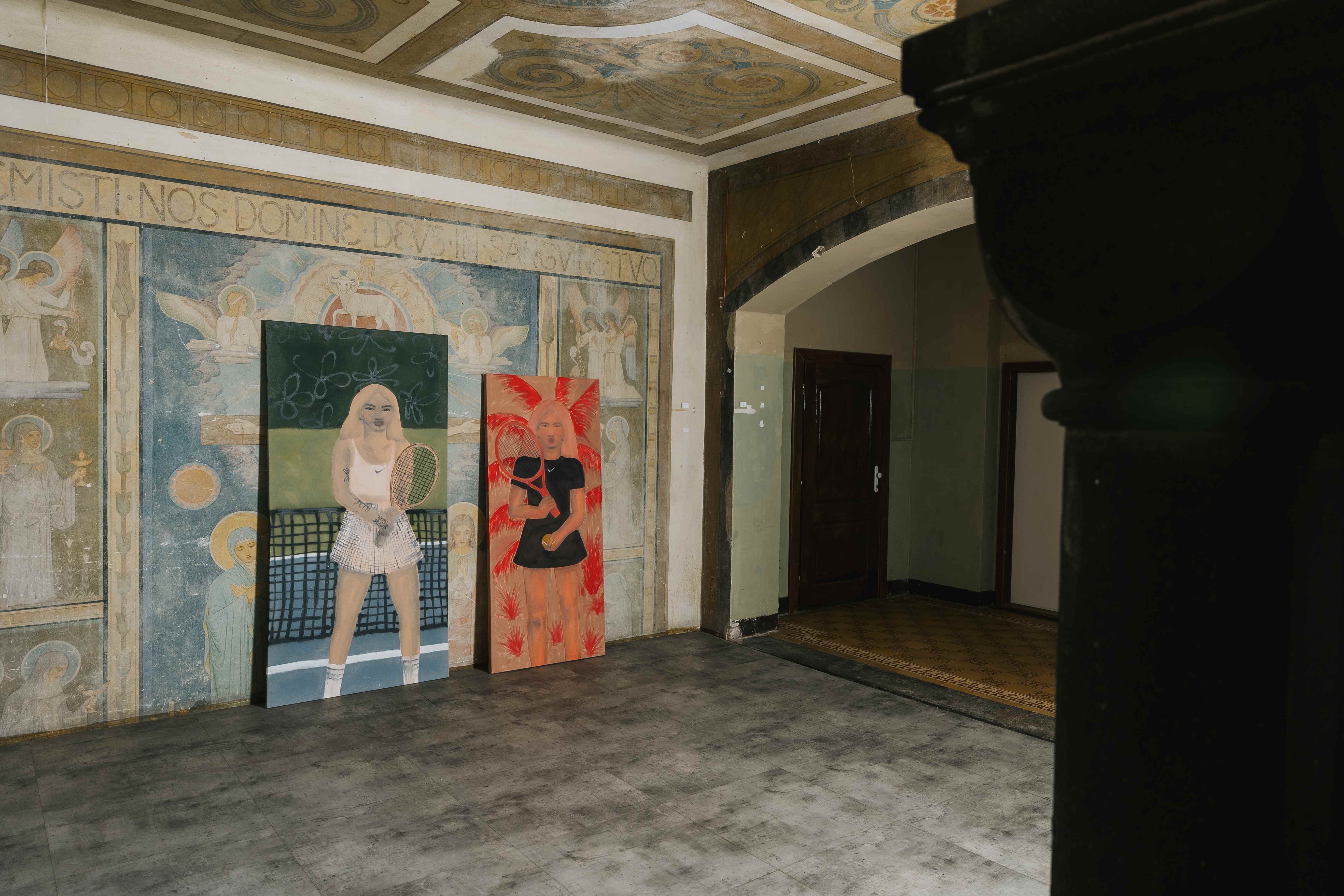
You often return to themes from the tennis courts. The tennis players in your work seem similar to the protagonists from your previous paintings about sexual tourism. Why is that?
The similarity might be apparent due to the continuity of the figurative theme, but the message is entirely different. The women and girls who were meant to represent the harshness of sexual tourism were dressed in erotic lingerie and often had colorful hair meant to evoke wigs commonly worn by prostitutes. I associate pink or colorful hair with lighter women.
And who are the figures on the courts?
They are all real people. Each portrayed person is someone I have learned a lot from and someone I greatly respect both in art and in personal life. Each painting is named after the person portrayed. So, my tennis players are real individuals—artists and friends. Each subject chose their own outfit for the paintings, something they felt most comfortable in. Some chose swimsuits, others hoodies and shorts.
The semi-nude and quite nude tennis players pose almost provocatively with balls and rackets, which suddenly take on the dimensions of symbolic objects or even sex toys. Does this create a certain erotic tension, and did you intend to highlight a broader theme here?
I admit that the tennis theme wasn’t meant to evoke erotic tension. Definitely not intentionally (laughs). The theme was meant to focus on artist friends, and I wanted to compare art and tennis as two disciplines side by side. In tennis, although it’s an individual sport, you can’t play without a partner. I find it’s the same in art. Even though our artistic "career" is often quite solitary, without other artists to inspire or consult with, creation isn’t possible. This is evident in group exhibitions, where the paintings or objects interact through the dialogue of the exhibited works.
Did you have a specific intention when you started exploring the tennis theme, or were you simply interested in the figurative depiction of tennis players on the courts?
I didn’t start the tennis theme with a specific intention. I was more focused on relaxing and lightening my work after my thesis. I wanted to find a new path. The thesis dealt with the issue of sexual tourism and was mentally quite heavy and depressing, especially after the trip to AFESIP. The tennis theme emerged as a way to lighten up and move towards something new, and it has developed into an interesting, still ongoing cycle.
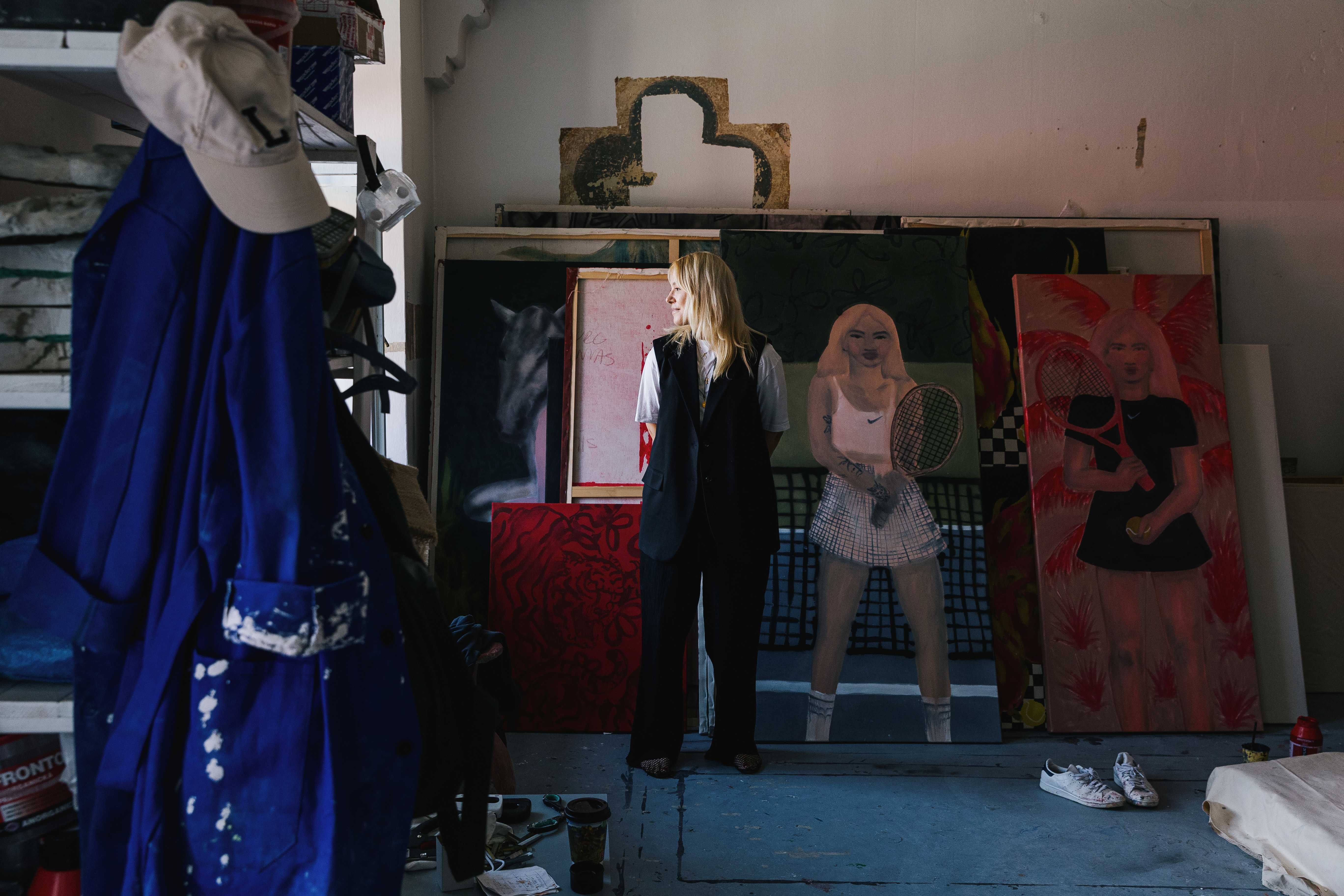
You first made a significant impact with your work on sexual tourism and the exploitation of women in Asian countries. Your approach to this topic was both sophisticated and clearly understandable. Do you see yourself as a bit of an activist in the art world?
I’m not sure if I’d call myself an activist in art. Maybe that’s something for the future. When I think of an activist, I imagine someone who has done a lot of work and made a significant impact. I still feel I have a long way to go. However, I’m incredibly grateful that my work brought me to the AFESIP center (editor's note: AFESIP Cambodia is an NGO focused on protecting the rights of women and girls who have been victims of human trafficking and sexual slavery), where they help rescue abused girls. I’ve done Art Therapy there several times, and the paintings we created together were brought back to Europe, with the proceeds from their sale sent directly to the center. I have big plans with this center. Since I started helping there, I no longer feel the need to paint directly about sexual tourism. Instead, I now focus on raising awareness through collaborative projects with girls from Cambodia.
Does this mean you’re interested in addressing broader societal issues in your work, or is it something you engage with when the opportunity arises, rather than being a primary intention when choosing subjects?
It’s definitely not a primary intention. Each theme in my work tends to emerge on its own and become clearer over time. It often takes me a while to settle my thoughts in my art, and only after some time does it become apparent to the viewer what the painting might be about.
The smooth and straightforward appearance of your stylization may seem instantly clear, but that’s usually not the case in real life. How was it really with your painting beginnings?
The journey to my technique was as complicated as my path to an artistic career. In my first year at AVU, Martin Mainer wanted to expel me from school. I wanted to paint in black and white, and he insisted on color. At that time, he even suggested that I might want to consider a career in flying instead.
And when did things change? Do you remember when you felt a strong motivation to fully commit to art?
It was the moment when I was on the verge of being expelled from the school that I desperately wanted to stay in. I realized that art was something I wanted to pursue in life, and I couldn’t bear to be away from the studio or not create for even one day. I transitioned to the technique of bleeding on canvas through experimenting with watercolors on paper and silk before discovering unprimed canvas, which helps me achieve a watercolor effect on a larger scale.
Motivation, willpower, hard work—these are terms often associated with sports. How did you manage self-discipline and effort during your studies to achieve what you wanted?
I am quite lazy in sports and lack discipline. I always say that I run regularly just so I can eat pizza (laughs). But in art, I’m a hard worker and extremely ambitious. That’s probably why no deadline ever escapes me, and I always give 110 percent, even if it sometimes takes a toll on my health, forcing me to catch up on sleep for days.
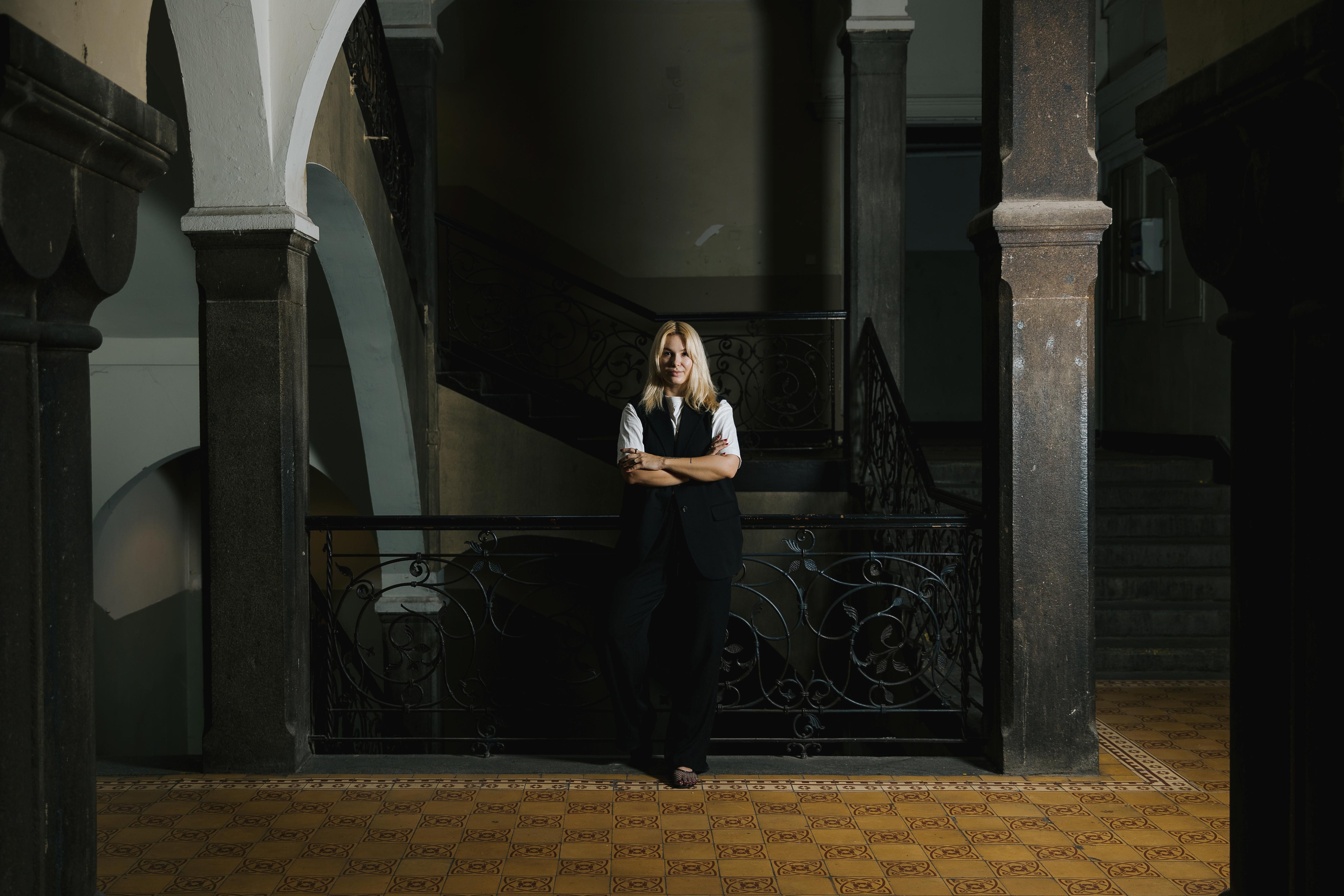
Has your experience in sports ever helped you when you needed to dive into work and complete unfinished tasks? Or the opposite?
For me, it’s not really connected—I keep them quite separate. Sport actually helps me mentally unwind from art. For instance, I applied to AVU without being fully convinced that I wanted to paint. But that changed during the entrance exams. In the first year, Martin Mainer and I agreed that I would work over the summer and see how things went in September. So back then, I worked like a dog.
How much time do you spend contemplating paintings or sketches before you actually start working on them?
I make very few sketches, usually only for more complex compositions, but otherwise, everything comes about intuitively in the moment. Many of my thoughts about how things might look come to me just before sleep or while running.
What about the balance between play and spontaneity vs. discipline and hard work?
My entire work is based on expressive spontaneity. Many things that come about are paradoxically destroyed immediately. Due to the specificity of my technique, I can’t make corrections, and moments in my work that I’m not satisfied with are often destroyed right away. Although the paintings might seem like they are created with great ease, they involve a long and intricate process of searching.
Do you have any favorite athletes?
Tennis player Emma Raducanu, racer Charles Leclerc, or aerobatic pilot Martin Šonka… They all inspire me with their dedication and discipline in their respective fields.
Please take a closer look at Laura Limbourg’s Instagram.




